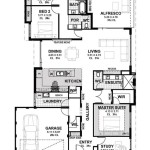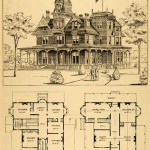Design Your Own Home Plans: A Guide to Creating Your Dream Space
Designing your own home plans is a rewarding endeavor that allows you to create a space that perfectly reflects your lifestyle and personal preferences. From the layout to the aesthetics, every detail can be tailored to your vision. However, this process also demands careful planning, research, and a strategic approach. This article will guide you through the key steps involved in designing custom home plans, empowering you to transform your dream home into reality.
1. Define Your Needs and Preferences
Before you begin sketching floor plans, it's important to establish a clear understanding of your requirements and desires. This involves asking yourself crucial questions about your lifestyle, family size, and future plans. Consider the following:
- Space requirements: How many bedrooms, bathrooms, and living areas do you need? Will you require dedicated spaces for hobbies, home offices, or guest rooms?
- Lifestyle and preferences: Do you prioritize open floor plans, privacy, or specific architectural styles? What are your preferences for natural light, outdoor spaces, and landscaping?
- Budget: Determine a realistic budget range for construction and ensure you can afford the materials and finishes you envision.
- Sustainability: Consider incorporating eco-friendly features such as solar panels, water conservation measures, and energy-efficient appliances.
By meticulously defining your needs and preferences, you create a solid foundation for your design process.
2. Research and Inspiration
Once you have a clear understanding of your requirements, it's time to embark on research and gather inspiration. Explore various home design styles, browse online resources, and visit model homes to identify features you admire. Consider the following:
- Architectural styles: Research different architectural styles like modern, farmhouse, traditional, or Mediterranean to determine which resonates with your taste.
- Floor plan layouts: Analyze different floor plan layouts, focusing on how space is utilized and how it flows. Note the pros and cons of open and closed floor plans.
- Building materials and finishes: Investigate different building materials, including wood, brick, stone, and concrete, considering their aesthetics, durability, and sustainability.
- Interior design elements: Explore various interior design styles, color schemes, furniture choices, and lighting options that complement your overall vision.
By engaging in thorough research and collecting inspiration, you can refine your design ideas and make informed decisions.
3. Utilize Design Tools and Software
Several design tools and software programs can assist you in creating detailed home plans and visualizing your ideas. These tools offer a range of functionalities, from basic floor plan sketching to 3D modeling and rendering.
- Floor plan software: Programs like RoomSketcher, Sweet Home 3D, and SketchUp allow you to create detailed floor plans, arrange furniture, and experiment with different layouts.
- 3D design software: Tools like Chief Architect, Home Designer Pro, and Revit enable you to create 3D models of your home and visualize its exterior and interior spaces.
- Online design platforms: Websites such as Houzz and Pinterest offer inspiration, design ideas, and resources for creating custom home plans.
Utilizing design tools can enhance your creativity, precision, and overall efficiency in the planning process.
4. Seek Professional Assistance
While designing your own home plans can be a fulfilling experience, seeking professional assistance is essential. An architect or designer can provide valuable expertise and guidance in various aspects of the project. They can:
- Optimize floor plan functionality: They can analyze your requirements and suggest layout adjustments to maximize space utilization and flow.
- Address structural considerations: Architects can ensure your design adheres to building codes and structural requirements.
- Create detailed construction drawings: They can prepare detailed drawings for permits, construction, and contractor communication.
- Recommend materials and finishes: They can offer insights into material selection, sustainability, and aesthetic considerations.
Engaging a professional can help you avoid potential pitfalls, enhance the quality of your design, and ensure a smooth construction process.

House Plans How To Design Your Home Plan

House Plans How To Design Your Home Plan

Design Your Own Home House Designing Homes

Design Your Own House Floor Plans Must See This Acha Homes

House Plans How To Design Your Home Plan

House Plans How To Design Your Home Plan

Impressive Make Your Own House Plans 1 Design Floor Free Home

3d Home Design Architect For Your Own House Free Planner Homify

Make Your Own Floor Plans

House Plans How To Design Your Home Plan








